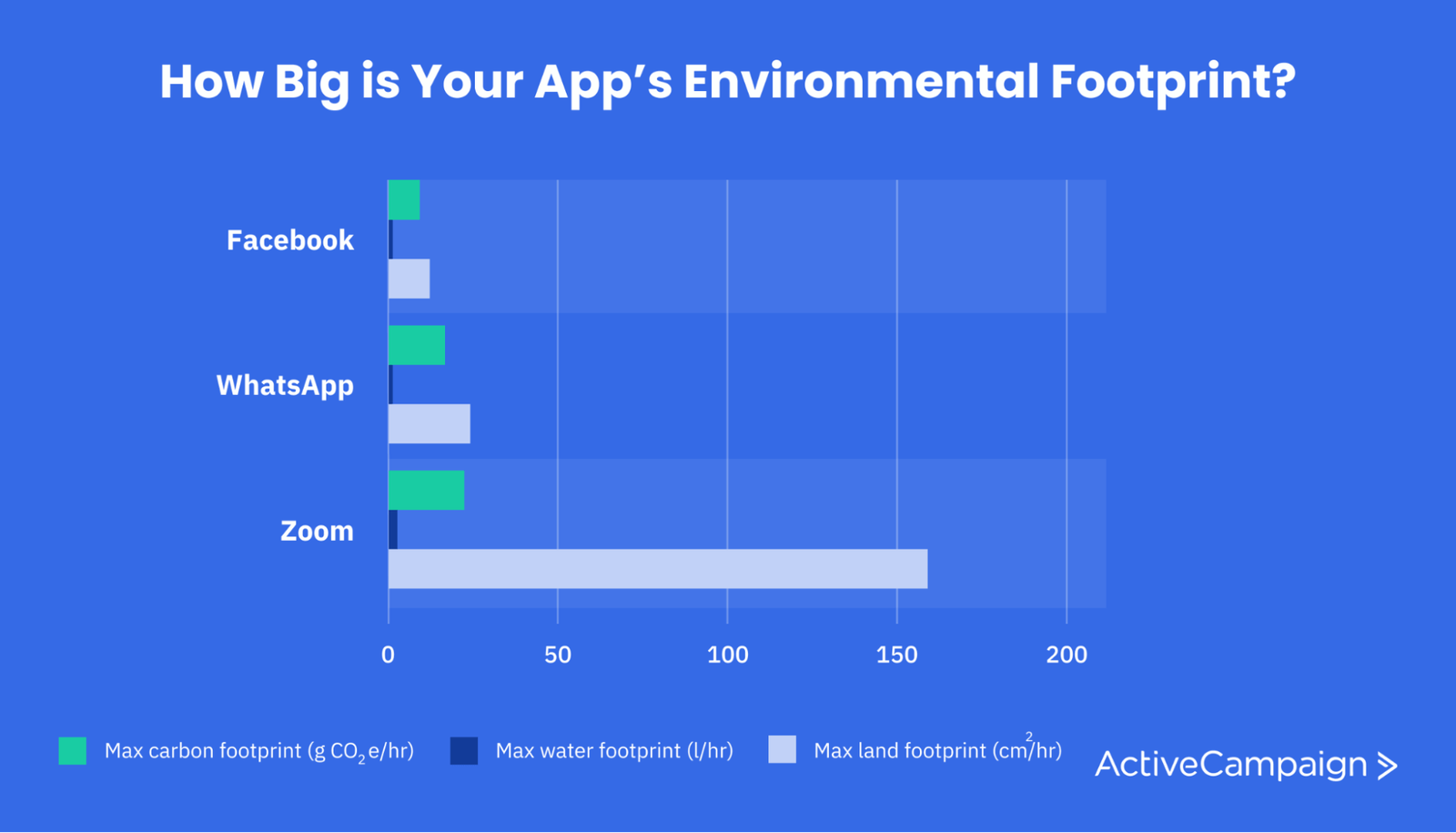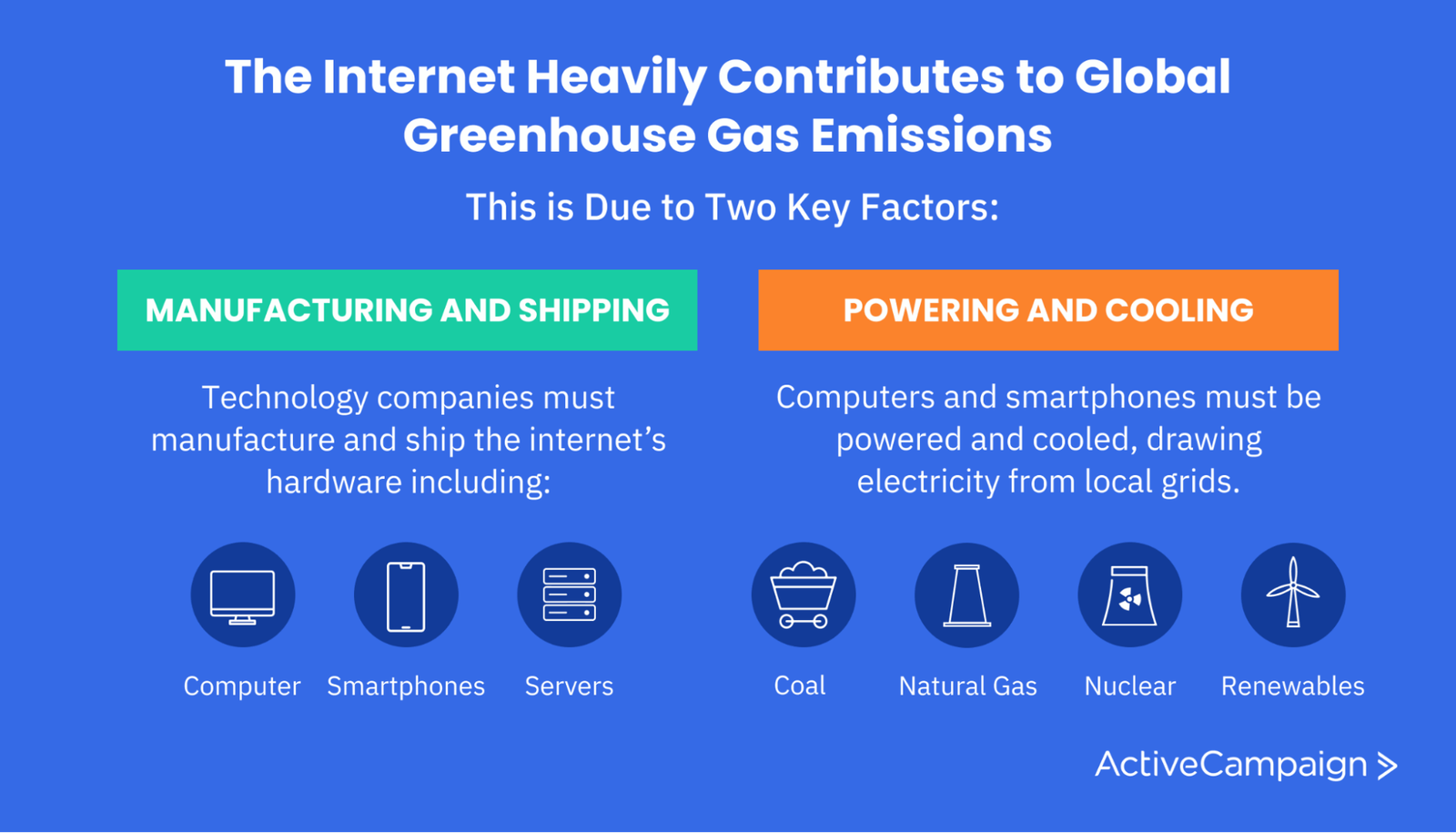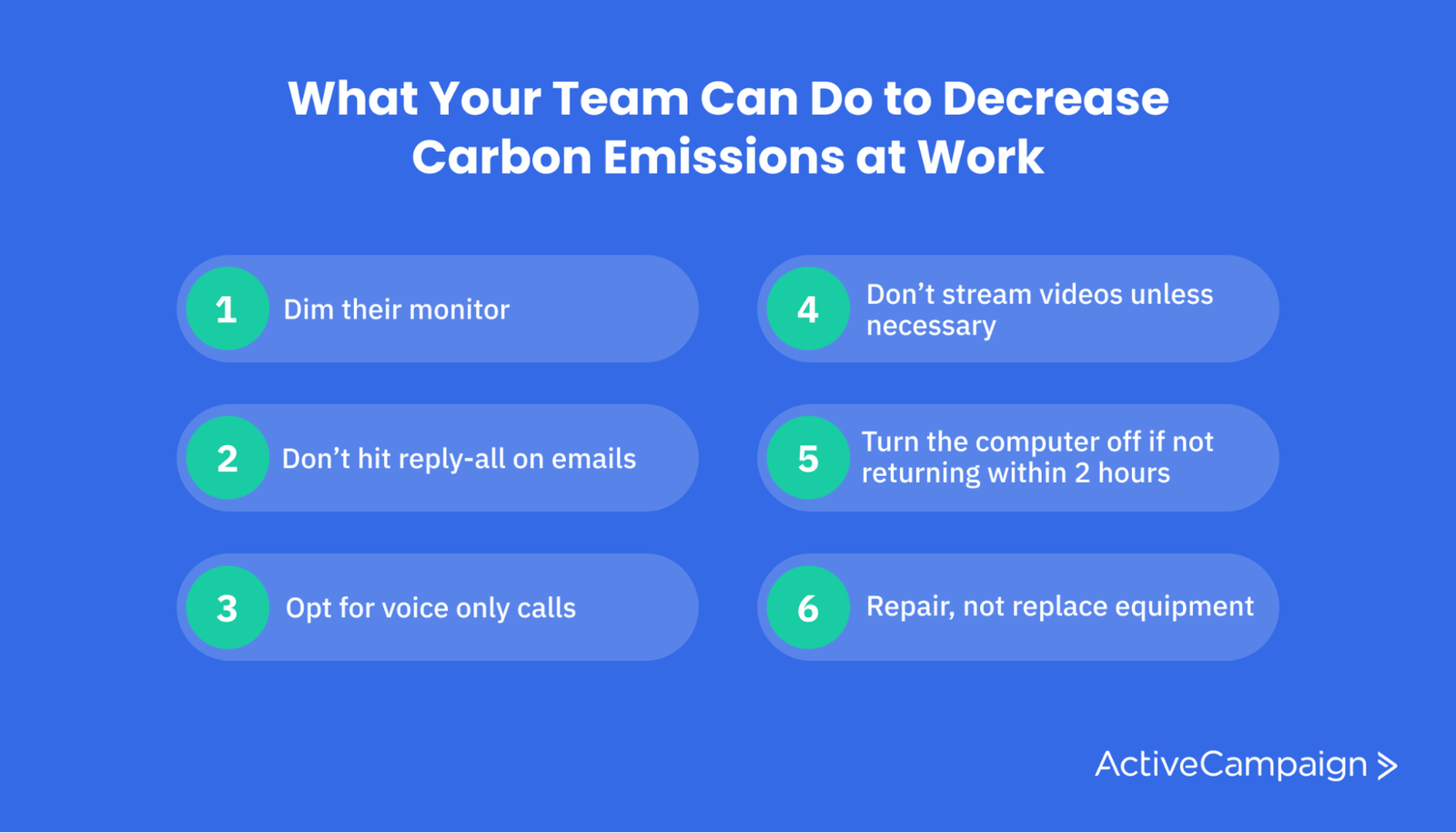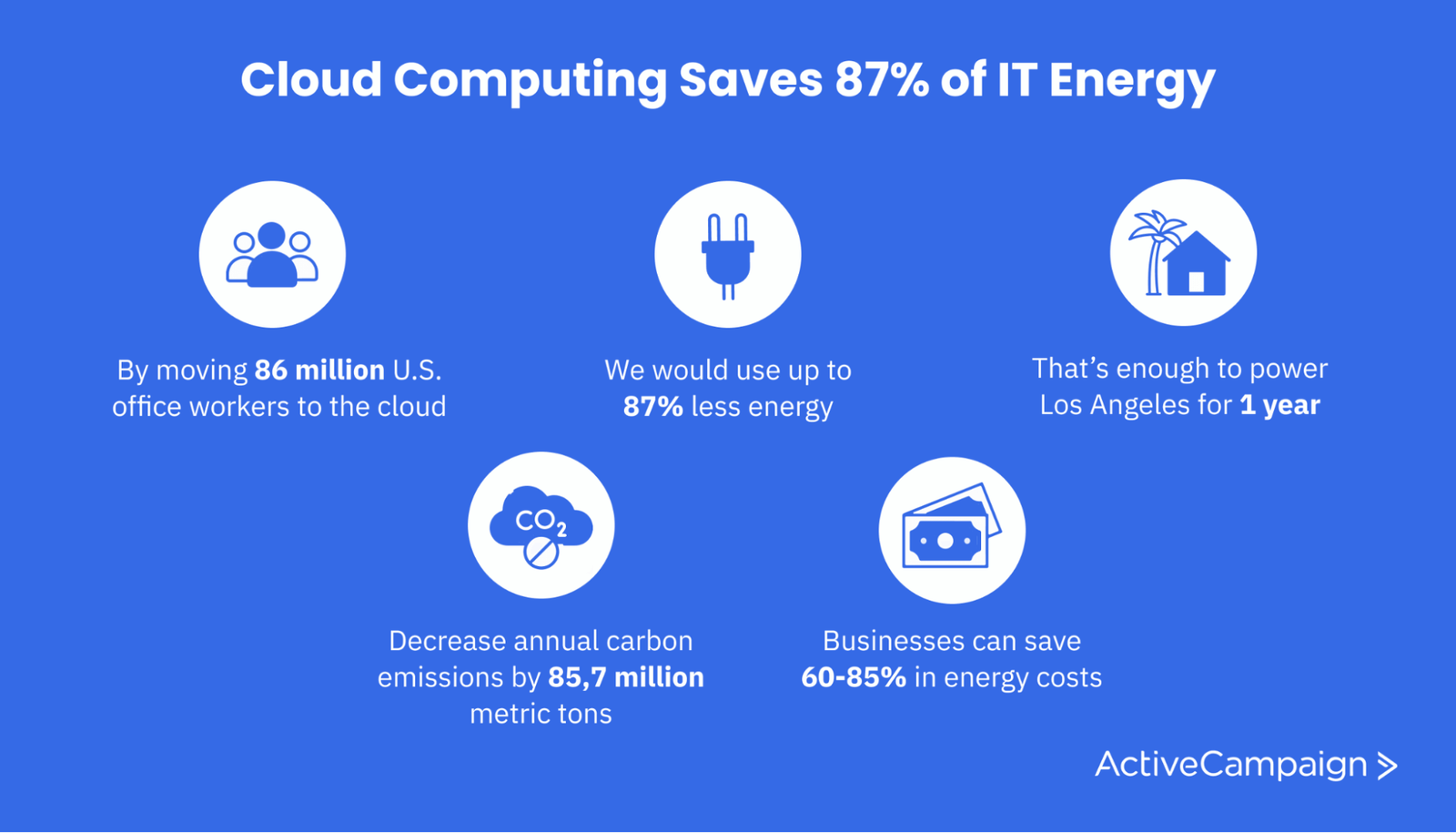The world is becoming increasingly digitized, with almost 50 billion devices connected to the internet. Businesses and consumers have started to see the importance of going green online. Implementing digital sustainability into their operations shows they’re socially conscious and are making efforts to limit their carbon footprint.
Access to knowledge on the go, online shopping, and binge-watching television series has made our lives much easier, but it has also increased the demand for energy. 3.7% of all global greenhouse emissions stem from our devices, internet access, and the network of systems that keep things running.
Online operations are not exempt from their duty of care to the environment. This article will explain what digital sustainability is and how your online business can reduce its carbon footprint and become more eco-friendly with a digital transformation.
Table of Contents:
What digital sustainability means for businesses
Digital sustainability is the practice of using digital technologies to minimize the negative environmental impact associated with them. This includes reducing energy consumption, carbon emissions, water use, and waste from within the business and its supply chains.
Ecommerce stores do most of their business online. The servers, website hosting, clicks on the website, and every successful and abandoned checkout require energy. It all adds up, and if not kept under control, it can have harmful consequences on the environment.
What goes on inside the office is just as important. How a company uses technology affects its green reputation and how much it costs to power everything. More and more products are able to connect to and interact with the internet as technology develops. This network of physical objects is known as the Internet of Things, or IoT for short.
According to a recent report, it is estimated that the number of connected IoT devices will reach 55.7 billion by 2025. This growth is driven by the falling cost of sensors and networking technology, as well as the increasing demand for connected devices. The benefits of IoT are vast and include everything from improved efficiency and productivity to greater oversight and control.
However, for all the benefits, there are also some downsides. IoT devices require a lot of energy to run. They need to be constantly connected to the internet and often use battery power, which can damage the environment if not disposed of properly. The number of devices in use also reduces your company's energy efficiency.
The way companies conduct business has changed with the rise of remote work and international clientele. Businesses have had to adapt the way they operate, which has put a strain on the planet's resources.
We've all become quite accustomed to meeting virtually. It's convenient and often necessary, given the current circumstances. But have you ever stopped to think about the environmental impact of all those Zoom calls? Every time you log into a meeting, your computer has to use energy to power the camera and microphone. And when multiple people are on a call together, that impact is multiplied.

Turning off the camera and hosting audio-only calls reduces your conferencing carbon footprint by 96%. Businesses need to be conscious of the way they're using technology and find more sustainable ways to run their operations.
As it stands, we would need to plant a forest twice the size of Portugal to offset the pollution caused by increased internet usage. Every business that leverages the internet and technology can make a difference by being more mindful and using digital sustainability practices.
What increases your carbon footprint?
Taking steps to reduce your digital carbon footprint can reduce your expenses (long term), improve your reputation, and make you more environmentally sustainable. It's a no-brainer, but where do you start?
Data centers
Data centers are large facilities used to store electronic data, and they are increasingly common as our world becomes more digital. While data centers play a vital role in our economy, they also significantly impact the environment. The bad news is that data centers already account for 1% of the global electricity demand.
This is an alarming figure, considering that data centers are only expected to grow in size and number in the years to come. However, despite all the doom and gloom, there are steps you can take to reduce the environmental impact of data centers.
Internet usage
The massive amount of data that we generate every day—from streaming videos to sending emails—uses a lot of energy. That usage can have a significant impact on our individual and business footprints.
Minor changes to the internet habits of your employees can have a significant effect. Here are some of the changes you can ask your employees to try at work:
- Stream videos at a lower resolution
- Promote audio calling instead of using video conferencing software
- Power off tech when not in use
- Limit the number of emails sent, including 'reply all'
- Use green search engines like Ecosia
Manufacturing
When businesses upgrade their technology, the old devices often end up in a landfill. This is known as e-waste, and it accounts for 2% of America's trash in landfills. However, e-waste is much more harmful than other types of waste, as it contains toxic chemicals that can leach into the soil and water. As a result, e-waste makes up 70% of America's toxic waste.

Reducing e-waste is as simple as finding a better way to dispose of your old devices, such as recycling or donating them to charity. However, the best way to reduce e-waste is to avoid buying new devices unnecessarily. By doing this, we can help protect the environment from the harmful effects of e-waste.
Power and cooling
Technology advances have led to an increased demand for power, and with that comes the need for more efficient ways to cool the devices that use that power. The process of cooling electronic devices has come a long way in recent years, but there is still room for improvement.
One way to increase efficiency is to use renewable energy sources to power devices. Solar and wind energy can generate electricity, which can then be used to run the cooling system. Another way to increase efficiency is to make use of natural ventilation. This can be done by placing the device in a well-ventilated area or by using a fan to circulate air around the device.
Video
Video is one of the most popular things to do online. It's a great way to share important information with your employees. But video streaming and downloading take a lot of energy. In fact, worldwide video traffic emissions alone are equivalent to the entire country of Spain.
Part of the reason for all that energy use is that video files are big and take a lot of bandwidth. When you're streaming or downloading a video, you're using up a lot of resources. And all that power use comes with environmental costs. So, if you want to help reduce your internet's carbon footprint, watch videos in standard definition instead of HD, or skip watching altogether and read the transcript instead.
Try it now, for free
Strategies to boost your digital sustainability
Focusing on digital sustainability is a great way to reduce your company's environmental impact and save money. Not only that, but it's becoming more important to consumers who are increasingly interested in environmentally responsible companies.
To get started, here are four strategies to boost your sustainability goals in the workplace:
Renewable energy
Using electricity is unavoidable for modern businesses, from their head offices to the data centers and servers in use. That’s a lot of energy, and that energy usually comes from fossil fuels. But it doesn't have to be that way. There are renewable energy sources that can power data centers and servers, such as solar or wind power.

Solar power and wind power are the most popular renewable energy sources, and it's not hard to see why. They're a clean and efficient way to produce renewable energy. And best of all, you can install solar panels and turbines almost anywhere to tap into these energy sources.
Green computing
Server virtualization is a green computing technique that reduces the number of physical servers needed. In turn, this reduces energy consumption and the amount of electronic waste produced. Using recycled materials is another way to be green when it comes to computing.
Recycled metals can be used to manufacture new computer components, and recycled plastics can be used to create external casing or packaging.
When choosing software, opt for green options whenever possible. Green software is designed to be more efficient, using fewer resources and resulting in a smaller carbon footprint.
Environmental, social, and corporate governance
It's essential for businesses to consider their activities' environmental and social impact. And that's where environmental, social, and corporate governance (ESG) comes in. ESG is a set of guidelines that helps businesses make environmentally and socially responsible decisions.
Build digital sustainability into your ESG guidelines and make sure your entire workforce is aware of the importance of being sustainable.
Education
Educating employees about conserving energy can go a long way in reducing overall usage. Employees are the ones who use energy the most, so it only makes sense that they should be a focus when it comes to energy conservation.
The most effective way to reduce employee carbon emissions is to provide training on using energy-saving technologies properly.

Since many electronic devices use power even when they're off, dimming the monitor is one way to reduce energy usage. Don't hit reply-all on emails unless it is absolutely necessary. The more emails sent the more significant the contribution to carbon emissions.
If you are not using the computer for more than 2 hours, turn it off to conserve energy. Printers, scanners, and other devices should also be turned off when not in use.
What is the future of digital sustainability?
The fight against rising carbon emissions has been ongoing for years. Digital sustainability is a relatively new concept, but it's gaining traction as more businesses look for ways to reduce their environmental impact.
In many cases, the benefits of digital sustainability go beyond reducing emissions; by making businesses more efficient, digital sustainability can also help save money and improve bottom lines. As the world looks for ways to address the climate crisis, digital sustainability will play an increasingly important role.
Fortunately, innovations in digital technology are making it easier for businesses to reduce their environmental impact. Cloud computing and server virtualization reduces the need for data centers, which consume a lot of energy. We can expect to see more businesses implementing these and other sustainable practices in the future.

As consumers become more aware of the importance of sustainability, they will seek out businesses that operate in a responsible manner. In the past, people were content to use products and services that didn't positively impact the environment. But people know better now as climate change dominates news cycles worldwide. Consumers are increasingly interested in supporting businesses that are sustainable and socially responsible.
Businesses have always been subject to government regulation, but the digital age has created new challenges for both businesses and policymakers. In the past, companies didn't have to worry about digital sustainability regulations as the governments of the world played catch up to the fast-changing industry.
However, governments are starting to implement policies to encourage businesses to be more sustainable. For example, the European Union has adopted a directive requiring all companies to disclose their greenhouse gas emissions. This policy is designed to hold businesses accountable for their impact on the environment and encourage them to reduce their emissions.
Similarly, the United States has introduced policies on the responsible development of digital assets, limiting carbon emissions. By implementing these policies, governments encourage businesses to put sustainability at the forefront of their operations.
Conclusion
Digital sustainability is nothing to be afraid of. Businesses save money, reduce their environmental impact, and improve their reputation. And the environment wins, too, with a decrease in greenhouse gas emissions and an increase in energy conservation.
More devices are connecting to the internet every day, and if businesses don't start making changes now, things will only worsen.
Do your part for the environment by making digital sustainability one of your company's core goals.








